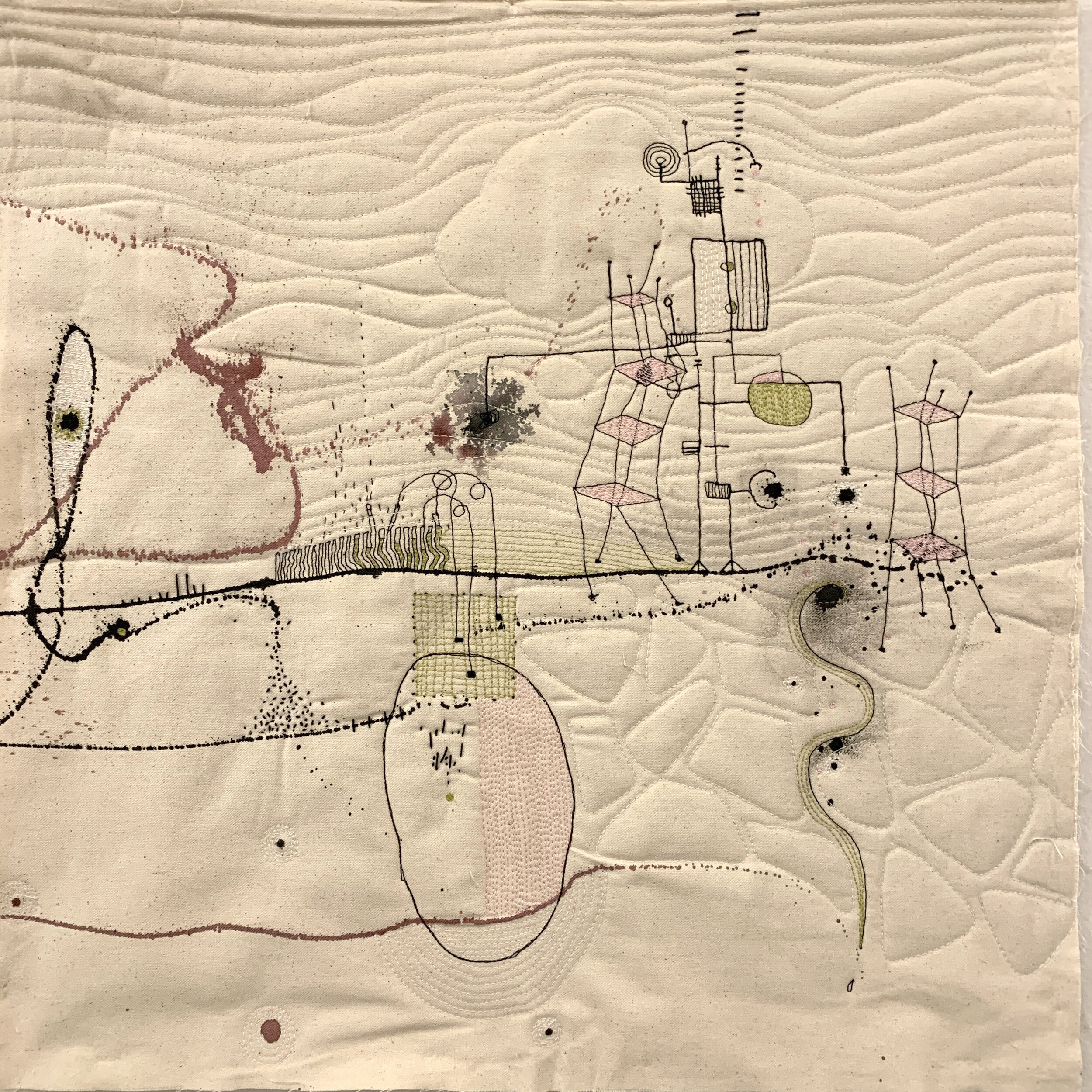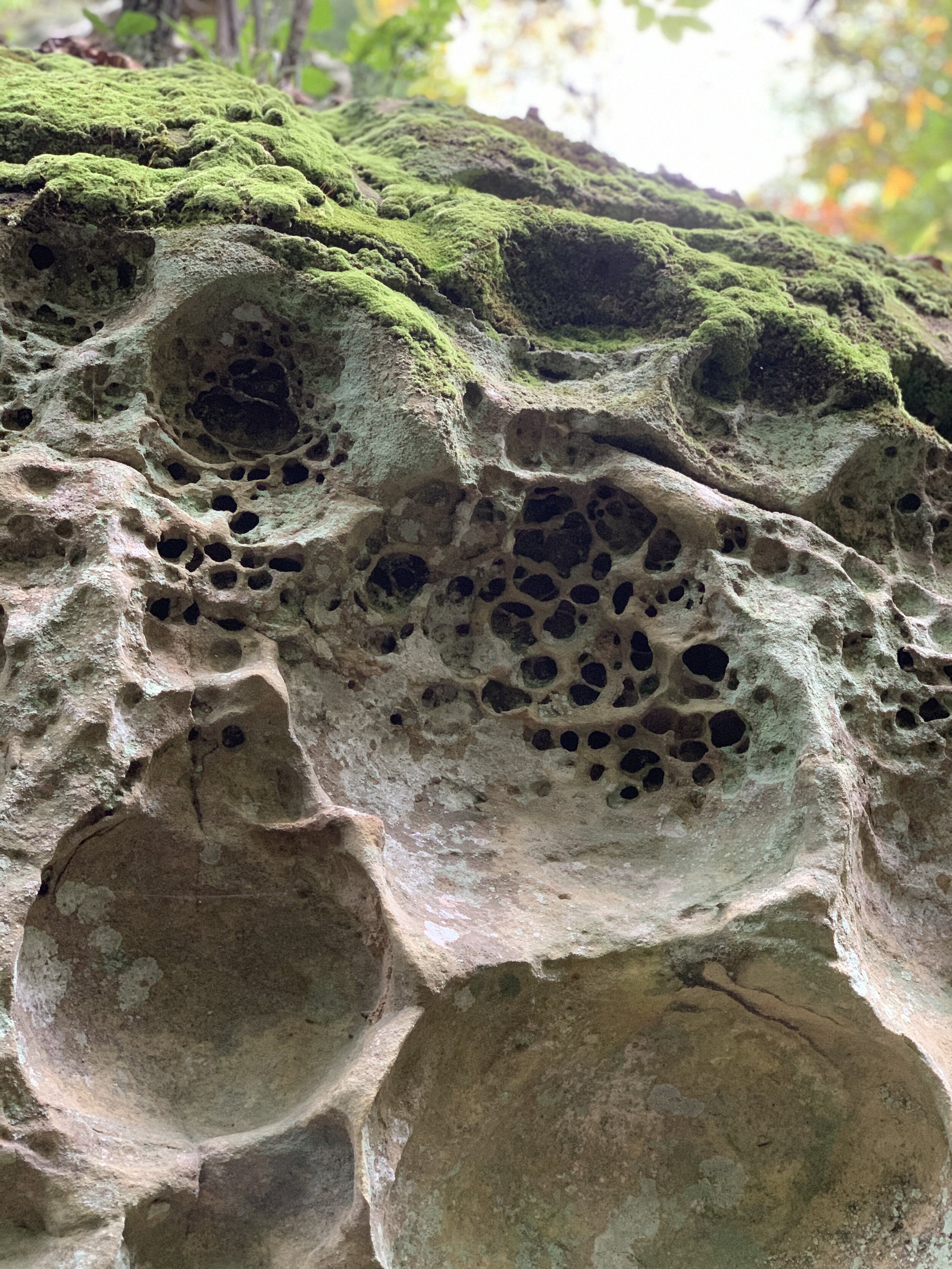I love puzzles. It’s a treasure hunt with rewards. Something about that quiet contemplation of shape, color and texture soothes me.
I guess that’s why I am drawn to this art form. Piecing together disparate elements to create a whole is a challenge that never ends. This particular piece grew from scraps of quilts gone by — those pieces that didn’t quite make the cut in other quilts have a new life here. I stitched the scraps together using my free motion foot or a decorative stitch that added to the level of detail. As I was piecing together these scraps characters appeared, shapes repeated and textures multiplied. I used the base composition as a stage for other characters that I added in with overstitching.
Things we might not notice without closer inspection. 2021, Paula Kovarik
The following are detail shots that might give you an idea of what started to appear as I was working on the whole. I started to run out of scraps toward the end. Which gave me a choice: cut up another quilt or finish the composition. I decided to end the composition here so that I could focus on other ideas that are floating in my studio. I may come back to it if other scraps become available.

































































